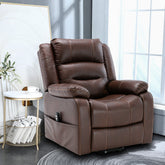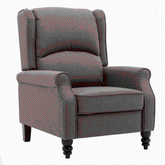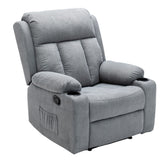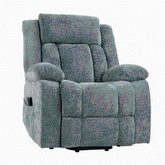Create the Perfect Coffee Station Table: A Must-Have for South African Professionals
Understanding the Essentials of a Home Office Setup
Assessing Your Space: What You Need to Know
Setting up a home office in South Africa starts with a good look at your space. Measure your room to see what furniture will fit. Check where the power outlets are. Look at how much natural light comes in. Think about noise levels and possible distractions. Try to find a quiet spot away from busy areas. Make sure there's good air flow for comfort. Consider how much storage you need for work items. Think about where you'll place your desk and chair. Don't forget to plan space for a coffee station table. This can be a great addition to your home office. It can help you stay energized throughout the day. A well-planned space with both work and break areas is key to a good home office.

Essential Tools and Materials for Your Home Office
A good home office needs the right tools. Here's what you should have:
- A comfortable desk chair
- A sturdy desk with enough work space
- A reliable computer or laptop
- Fast internet connection
- Good lighting (desk lamp and ceiling light)
- Storage solutions like shelves or drawers
- Power strip with surge protection
- Printer and scanner if needed
- Basic office supplies (pens, paper, etc.)
- Headphones for online meetings
- A coffee station table with coffee maker and supplies
Choose quality items that will last. These tools, including the coffee station, will help you work well.
The Psychological Benefits of a Well-Equipped Home Office
A well-set-up home office with a coffee station can boost your mood and work output. The coffee area offers a nice break from your desk. It can help reduce stress and improve focus. A dedicated workspace helps separate work and personal life. Having the right tools, including comfort items, makes work smoother. The coffee station can make you feel more at home in your office. It provides a spot for quick breaks and refreshment. A well-designed space with both work and break areas can make you happier with your job. It shows you value both productivity and well-being in your work environment.
Optimizing Your Home Office for Productivity
The Importance of a Comfortable Workspace
Comfort is key in your home office, especially with a coffee station table. Get a good desk chair that supports your back well. Set your desk at the right height to avoid strain. Use a footrest if you need it. Place your coffee station in a spot where you can easily take short breaks. Put your computer screen at eye level. Use wrist rests for your keyboard and mouse. Keep the room temperature just right. Make sure the air is fresh and clean. A comfy workspace with a mix of work and break areas helps you work better. The coffee station gives you a place to recharge during the day. This balance can help you stay focused and productive.

Innovative Storage Solutions for Your Home Office
Smart storage keeps your home office tidy and efficient. Try these ideas:
- Wall shelves for books and supplies
- Under-desk drawers for easy access
- Cable organizers to reduce clutter
- Desks with built-in storage
- Pegboards for organizing small items
- Storage ottomans near your coffee station
- Cloud storage to reduce paper files
- Magnetic boards for quick notes
- Hanging organizers on the back of doors
- A small fridge under your coffee station table
These solutions help keep your workspace neat. A tidy office can help you work better and focus more. Good storage also keeps your coffee station organized and ready for use.
Lighting and Sound: Enhancing Your Home Office Environment
Good lighting and sound control are vital for a productive home office. Use both natural and artificial light. This helps reduce eye strain. Put your desk near a window if you can. Use a desk lamp for focused work. Get adjustable lights to match different times of day. For sound, use noise-cancelling headphones. These block out distractions. Try white noise machines or apps if you like background sounds. Consider rugs or acoustic panels to reduce noise. Place a soft light near your coffee station for a cozy break area. A well-lit, quiet space can help you focus better and enjoy your coffee breaks more.
Leveraging Your Home Office for Growth and Success
Marketing Your Home Office Setup: Tips and Tricks
Sharing your home office setup, including your coffee station, can create new opportunities. Post photos of your unique workspace on social media. Show off how you balance work and breaks. Write about why you chose to include a coffee station in your office. Share tips on creating a productive yet comfortable workspace. Join online groups about modern office design. Give virtual tours of your office to potential clients. Explain how your setup, including the coffee area, helps you work better. Make videos about your daily routine in your innovative home office. These steps can build your personal brand. They can also help you attract clients who value creativity and well-being.

Building a Brand Around Your Home Office
Your home office with a coffee station can help build your personal brand. Use the unique style to reflect your work identity. Create an interesting background for video calls that includes your coffee area. Use branded items that match your office's style. Make a unique hashtag for your office posts, featuring the coffee station. Share how your office design, including break areas, fits your work values. Think about offering advice on creating productive, comfortable workspaces. Your branded office can become a key part of your professional image. It tells a story of balance and attention to detail. A strong, unique brand can help you stand out in your field.
Networking and Collaboration: Turning Your Home Office into a Hub of Activity
Make your home office, complete with coffee station, a place for networking and teamwork. Set up good video call equipment that shows off your unique space. Join online co-working spaces and share your innovative setup. Take part in virtual networking events with your creative office as a backdrop. Use online tools for group work, and share your comfort-focused approach. Plan regular virtual coffee chats in your inspiring space. Think about hosting online workshops from your home office. Create a fun virtual background that includes your coffee station for online meetings. A well-equipped, creative home office can help you make meaningful connections. You can build strong work relationships while showcasing your unique approach to work. Your office becomes more than a workspace. It's a place for growth, collaboration, and innovative thinking.








Leave a comment
All blog comments are checked prior to publishing